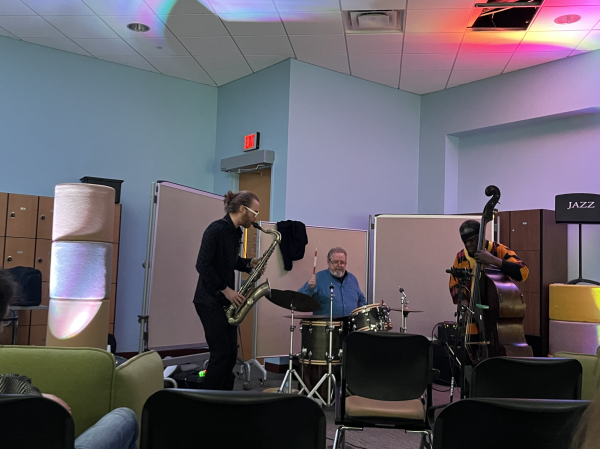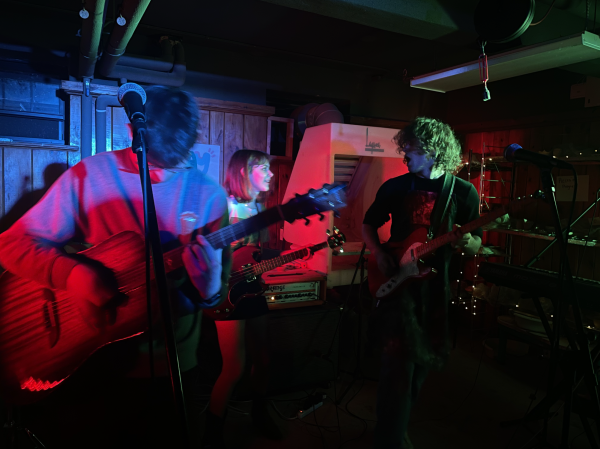Daniel Liebskind’s Views on Architecture: an Art Form and a Risk
“Architecture is about dignity and about life and about beauty,” renowned architect Daniel Liebskind said at a lecture at Colgate on Wednesday, March 27.
Liebskind is the architect behind a number of beautiful, well-known buildings, including the redevelopment of the World Trade Center. He is also the author of “Edge of Order,” (2018). Liebskind discussed his life, becoming an architect and what his profession means to him.
Liebskind was born in Poland. His parents were both survivors of the Holocaust, but he grew up under communism in a country full of antisemitism, hatred and fear. He left Poland as soon as possible and took the first train to Israel in the 1950s.
He was a professional musician for much of his early life and thinks of architecture as similar to music. He started drawing abstract images to project the world of (his) spaces into a two dimensional form. Liebskind’s drawings were based on a musical sense that he believes architecture puts us in. When he started working as an architect, he worked for multiple famous firms, however, he only lasted one or two days. He wasn’t fired, but it was “just too boring” for him.
Liebskind began to talk about the chapters of his books and his many different projects. The first chapter he talked about was “The shifting stars,” a chapter on memory. He explained that memory is not just given; it has to be created and worked on.
“The mind is like an empty room, if you don’t fill it with some furniture, it’s very boring,” he said.
One of the projects Liebskind discussed was an apartment building he built in Warsaw, Poland called Zlota 44. It is the tallest residential tower in all of Europe. He created a triangle shape to represent the wing of the Polish eagle that was cut off by Soviet domination. The building gives residents amazing views into a country that he says he had avoided for so long because of the dark memories he had there. Liebskind wanted to go back to Poland to build the building after there had been a revolution from the oppression that Stalin opposed. It is the first residential building in a metropolitan setting and has become an icon of Warsaw.
All of Liebskind’s buildings were designed with outstanding creativity. When he created the Jewish Museum in Berlin, Germany, his first act was to draw the star of David and lay it on to a map of Berlin. He thought of multiple symbolic designs and ideas to represent the dark culture that the museum would portray. Liebskind refused to make a bridge between the two buildings of the museum; instead, he wanted
to create an underground tunnel to connect the buildings to represent the darkness of Germany where antisemitism and bigotry were at their height of the state.
Liebskind takes risks in his creations. He has received backlash, but it is the primary reason that he is so successful. When he entered the competition to design the redevelopment of the World Trade Center, he only had a team of a few friends. He was up against 500 other architects with expert teams of hundreds on their side. He won the competition in creating a design much unlike the others. He did not believe that any mega structure should stand in this sight, but wanted to represent the resilience of America. He found this resilience in a wall that dammed water from coming in and created a sort of waterfall that commemorated all the victims.
“It’s not about the glory of the building. It’s about this wall, the bedrock, the resilience of America,” Liebskind said.
His site creates a sense of both past memories, but also represents the resurrection of optimism in New York.
Liebskind has proved many people wrong in his creations and designs. In the nature of doing something new, he explains that he will inevitably expose controversy, which isn’t always a bad thing.
Contact Jessica Argento at jargento@colgate.edu.
Jessica Argento is a senior from Westchester, NY concentrating in international relations and minoring in economics and sociology. She has previously served...






